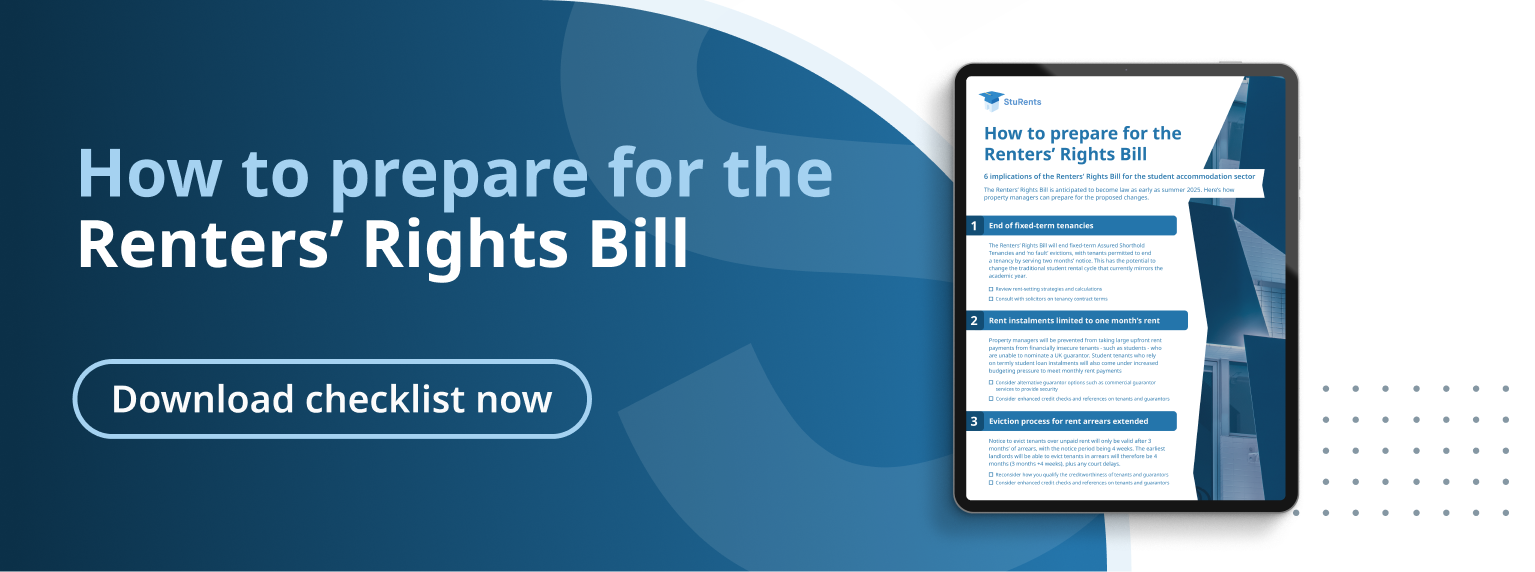
Guide to the Renters’ Rights Bill and Section 21

Image courtesy of Adobe
The Labour government introduced the Renters’ Rights Bill in September 2024, in line with their manifesto’s pledge to increase tenant protections by abolishing Section 21 ‘no-fault’ evictions. This reform aims to provide greater security to renters by ending a landlord’s ability to evict without valid cause. Unlike the previous Conservative administration's Renters (Reform) Bill, Labour’s version will implement these changes without waiting for court system reform.
In this guide, we’ll break down what Section 21 evictions are, how the Renters’ Rights Bill changes eviction practices, and what landlords need to know to prepare for the upcoming legislation.
What are Section 21 evictions?
Under current legislation, a Section 21 notice allows landlords to regain possession of a property without providing a reason. This no-fault eviction notice can be issued at the end of a fixed-term tenancy (where a contract has a specified end date) or during a periodic tenancy (which does not have a fixed end-date). Section 21 requires landlords to provide a minimum of two months’ notice but does not demand any justification for the eviction.
This flexibility has allowed landlords to manage tenancies more freely but has left tenants vulnerable, with little recourse if evicted without cause.
What does the Renters’ Rights Bill say about Section 21 evictions?
The Renters’ Rights Bill abolishes Section 21 entirely, meaning landlords will no longer have the right to evict tenants without providing a valid reason. Instead, landlords will need to use Section 8 notices, which require specific grounds for eviction, such as serious rent arrears, anti-social behaviour, or the landlord’s intention to sell the property.
Crucially, this change applies to both new and existing tenancies, providing renters with immediate security and protection from retaliatory evictions. The government has positioned this reform as a vital step in levelling the playing field between tenants and landlords, arguing that tenants can now challenge poor practices without fearing an eviction served in response.
How can a landlord regain possession of their property?
With Section 21 evictions abolished, landlords seeking to regain possession of a property will need to rely on Section 8 grounds and meet the criteria for each specific circumstance. Here’s a look at the key grounds landlords can use under the new law:
Sale of property: Ground 1A
This new ground permits landlords to seek a possession order if they plan to sell the property, but certain requirements apply:
- A 12-month protected period means that landlords cannot evict tenants within the first year of a tenancy.
- The landlord must issue a four-month notice before the eviction.
- The property cannot be marketed or rented within 12 months after the notice is served, or landlords face fines up to £7,000. Landlords must also provide evidence of their intention to sell, adding a layer of transparency to prevent misuse of this provision.
Serious rent arrears: Change to Ground 8
The Renters’ Rights Bill also updates Ground 8, extending the minimum rent arrears threshold to three months instead of the current two. Under this new rule:
- A four-week notice period is required before landlords can initiate possession proceedings. This change gives tenants a longer grace period to address rent arrears but may increase landlords’ financial exposure when tenants default on payments.
- Tenants could be four months in arrears by the time eviction is enforceable.
Student HMOs: Ground 4A
For landlords renting houses in multiple occupation (HMOs) to full-time students, Ground 4A allows possession at the end of the academic year. To use this ground, landlords must:
- Notify tenants of their intent to re-let to full-time students in the next academic year. This ground, limited to HMOs exclusively occupied by students, helps maintain a predictable rental cycle aligned with the academic calendar.
Can landlords still serve a Section 21 notice now?
Yes, landlords may still issue Section 21 notices until the Renters’ Rights Bill becomes law, anticipated by summer 2025. However, as the effective date nears, many landlords are opting to serve Section 21 notices in advance. Acting sooner rather than later is advisable, as these notices will be invalid once the Bill is in effect.
How can landlords prepare for the Renters’ Rights Bill abolishing Section 21?
The elimination of Section 21 means that landlords will need to reassess their tenant vetting processes and explore new strategies to manage tenancies effectively. Here are some key steps to take in preparation:
- Review tenant creditworthiness: The new law requires tenants to be in arrears for three months before eviction. Carefully assess tenants’ payment histories and consider credit checks to minimise the risk of prolonged arrears.
- Consider guarantor services: To add a layer of financial security, use commercial guarantor services like Canopy and Leap, which can cover unpaid rent and protect landlords from the risk of long-term arrears.
- Update tenancy agreements: With fixed-term tenancies phasing out in favour of periodic tenancies, landlords should revise their agreements to comply with the new legal framework and ensure all terms are clearly outlined.
Preparing for these changes is essential to adapt to the new standards and safeguard your interests. Utilising Concurrent, which integrates seamlessly with Canopy and Leap, can help you navigate the transition by providing essential coverage against rent default and tenant liabilities.
Want to find out more about how to prepare for the Renters’ Rights Bill? Download our checklist today to understand what is to come and actionable steps you can take to get ready.
Share


